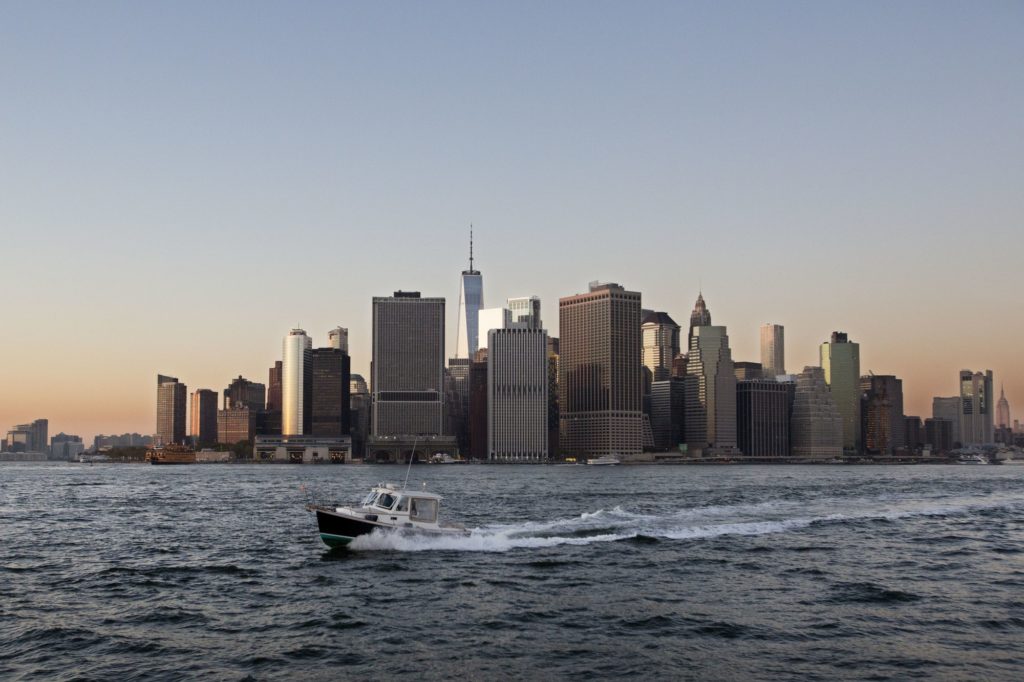As New York City is preparing to reopen some businesses and increase subway service Monday, the state’s latest data suggests hospitalizations and deaths linked to the coronavirus are continuing their gradual decline.
Mayor Bill de Blasio says city inspectors will visit every construction site to ensure compliance with rules to protect workers and the community from COVID-19.
HOSPITALIZATIONS DECLINE
Gov. Andrew Cuomo said at least 42 people died in New York on Thursday due to COVID-19. That’s a drop from as many as 800 deaths in one day as the crisis peaked in mid-April, according to the state’s official tally, which doesn’t include people who likely died of the disease.
Meanwhile, 2,728 patients were hospitalized for COVID-19 Thursday, down from a peak of over 18,000.
“The people of the state radically changed how they behaved and look at that progress: lowest number of hospitalizations to date in a matter of weeks,” Cuomo said.
The latest data suggests deaths are dropping in New York City as well: The city has reported nearly 150 confirmed COVID-19 deaths in the last week, down from about 300 in the previous week.
There are concerns that the progress could be undermined by large protests in the recent days over police misconduct. The governor has urged protesters to get tested for the virus.
Some regions that are reopening have seen upticks.
The Fingers Lake region, for example, has seen over 200 people hospitalized for COVID-19 this week, up from around 120 in early May.
___
SUBWAYS ADDING SERVICE
New York’s subways and buses will return to their regular daytime service on Monday for the first time in more than two months, as the city enters the first phase of reopening.
The Metropolitan Transportation Authority reduced service on subways, trains and buses in March after people avoided public transport during the pandemic. Ridership ultimately dropped by more than 90% but has begun to rise in recent weeks. In early May, the city began closing subways from 1 a.m. to 5 a.m. each day for cleaning; that closure will continue, though daytime service will get back up to normal levels.
Riders will find hand sanitizer and floor markings in subway and train stations to encourage social distancing, and free masks if they forget theirs. What they won’t find is enforced social distancing on subways and buses, an idea pushed by de Blasio earlier this week but rejected by the MTA. De Blasio had urged the agency to block off every other seat on trains and buses.
“We take the mayor’s suggestions seriously, but to suggest that the New York City subway system, as ridership is growing, can allow for social distancing suggests an unfamiliarity with the system, or a lack of sincerity,” interim New York City Transit President Sarah Feinberg said Friday.
An email seeking comment was sent to a spokesman for de Blasio.
MTA Chairman Patrick Foye said transit systems in Seoul, Berlin and Tokyo that are similar to New York’s have required masks without enforcing social distancing onboard, with no evidence of resulting spikes in new cases.
Officials said Friday they expect subway ridership to increase to about 15% of prepandemic levels and bus ridership to increase to between 30% and 40% of normal during phase one of reopening.
___
CONSTRUCTION SITES
Workers can return to the job at up to 32,000 construction sites when New York City enters the first phase of easing coronavirus restrictions on Monday, de Blasio said.
Inspectors from the city Department of Buildings will visit every site to check for compliance with rules requiring hand sanitizer, face coverings and social distancing, the mayor said, adding that the inspectors will “educate” construction managers during the first 30 days and will move to fines and stop-work orders after that.
The first phase of reopening also gives the green light to manufacturing and wholesale trade businesses. Retail stores can offer curbside or in-store pickup or drop off.
The city is boosting coronavirus testing capacity and will deploy mobile testing trucks in Queens and the Bronx next week.
(AP)











